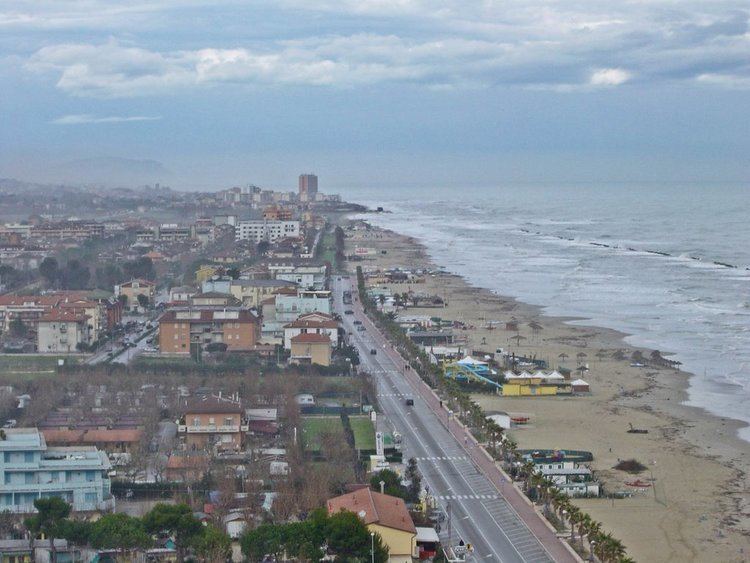Province / Metropolitan city Fermo (FM) Elevation 319 m (1,047 ft) Postal code 63900 | Frazioni see list Demonym(s) Fermani Local time Saturday 12:25 AM University University of Fermo | |
 | ||
Weather 9°C, Wind N at 14 km/h, 60% Humidity | ||
Fermo [ˈfermo] (ancient: Firmum Picenum) is a town and comune of the Marche, Italy, in the Province of Fermo.
Contents
- Map of 63900 Fermo Province of Fermo Italy
- History
- Geography
- Frazioni
- Secular buildings
- Religious buildings
- Twin towns
- People
- References
Map of 63900 Fermo, Province of Fermo, Italy
Fermo is on a hill, the Sabulo, elevation 319 metres (1,047 ft), on a branch from Porto San Giorgio on the Adriatic coast railway.
History
The oldest human remains from the area are funerary remains from the 9th–8th centuries BC, belonging to the Villanovan culture or the proto-Etruscan civilization.
The ancient Firmum Picenum was founded as a Latin colony, consisting of 6000 men, in 264 BC, after the conquest of the Picentes, as the local headquarters of the Roman power, to which it remained faithful. It was originally governed by five quaestors. It was made a colony with full rights after the battle of Philippi, the 4th Legion being settled there. It lay at the junction of roads to Pausulae, Urbs Salvia, and Asculum, connected to the coast road by a short branch road from Castellum Firmanum (Porto S. Giorgio).
With the Pentapolis, in the 8th century it passed under the authority of the Holy See was thenceforth subject to the vicissitudes of the March of Ancona. In the 10th century it became the capital of the Marchia Firmana. Under the predecessors of Honorius III (1216–27) the bishops of city became prince-bishops, first with the secular rights of counts, and later as princes of Fermo.
In 1199 it became a free city, and remained independent until 1550, when it was annexed to the Papal States.
In the contest between the Hohenstaufen and the papacy, Fermo was besieged and captured several times; in 1176 by Archbishop Christian of Mainz, in 1192 by Emperor Henry Vl, in 1208 by Marcuald, Duke of Ravenna, in 1241 by Emperor Frederick II, and in 1245 by Manfred of Sicily. After this it was governed by different lords, who ruled as more or less legitimate vassals of the Holy See, e.g. the Monteverdi, Giovanni Visconti and Francesco Sforza (banished 1446), Oliverotto Euffreducci (murdered in 1503 by Cesare Borgia), who was succeeded by his son Ludovico, killed at the battle of Montegiorgio in 1520, when Fermo became again directly subjected to the Holy See.
Fermo has been the capital city of the new province of Fermo since 2009.
Geography
The municipality borders with Altidona, Belmonte Piceno, Francavilla d'Ete, Grottazzolina, Lapedona, Magliano di Tenna, Massa Fermana, Mogliano (MC), Monte Urano, Montegiorgio, Monterubbiano, Ponzano di Fermo, Porto San Giorgio, Porto Sant'Elpidio, Rapagnano, Sant'Elpidio a Mare and Torre San Patrizio.
Frazioni
It counts the hamlets (frazioni) of Camera, Campiglione, Cantagallo, Casabianca, Capodarco, Cartiera di Tenna, Concerie, Contrada Boara, Ete Palazzina, Faleriense, Gabbiano, Girola, Lido di Fermo, Madonnetta d'Ete, Marina Palmense, Moie, Molini Tenna, Montesecco, Montone, Parete, Pompeiana, Ponte Ete Vivo, Sacri Cuori, Salette, Salvano, San Biagio, San Girolamo, San Lorenzo, San Marco, San Michele, Lido San Tommaso, Torre di Palme and Villa San Claudio.
